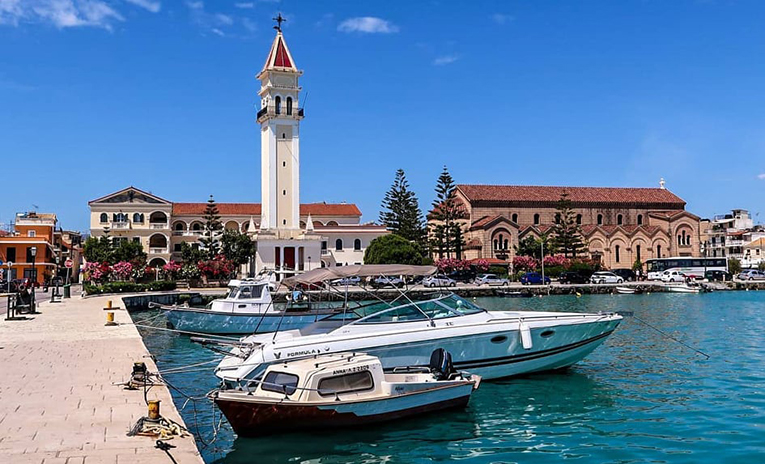
You are using the Free Edition of ZakynthosAPP. For extensive information on Zakynthos, GO PRIME with our comprehensive Greek Travel App featuring the full editions of Zakynthos and 25 more Greek islands & Athens.

Zakynthos, also known as Zante, is an island located in the Ionian Sea, off the western coast of Greece. The island has a rich and varied history that dates back to ancient times, with influences from Greek, Roman, Byzantine, and Venetian cultures.
The earliest known inhabitants of Zakynthos were the Mycenaean Greeks, who established settlements on the island around 1500 BC. During the Archaic and Classical periods of ancient Greece, Zakynthos was part of the larger political and cultural context of the Ionian islands. The island was associated with the god Apollo and was believed to have been the birthplace of the poet Homer.
In the 4th century BC, Zakynthos became part of the ancient Greek city-state of Athens, and in the following centuries, it was ruled by various other Greek city-states, including Sparta and Corinth. During this time, the island’s economy was based on agriculture, particularly the cultivation of olives and grapes, as well as fishing and trade.
In the 2nd century BC, Zakynthos was conquered by the Romans, who ruled the island for over 500 years. During this period, Zakynthos became an important center of commerce and culture, with a thriving economy and a rich artistic and literary tradition. The island was also known for its high-quality wines, which were exported throughout the Roman Empire.
After the fall of the Roman Empire, Zakynthos became part of the Byzantine Empire in the 4th century AD. During this time, the island was largely neglected and suffered from a decline in its economy and cultural life. However, some important Byzantine-era churches and monasteries still remain on the island, including the Church of Agios Nikolaos and the Monastery of Panagia Anafonitria.
In the 13th century, Zakynthos was conquered by the Venetians, who ruled the island for over 300 years. During this time, the Venetians built a number of impressive buildings and fortifications, including the Venetian Fortress and the Church of Saint Dionysios, which is named after the patron saint of the island.
In the 16th and 17th centuries, Zakynthos became an important center of commerce and trade, with a thriving port and a large merchant fleet. The island’s economy was based on the production of olive oil, wine, and raisins, as well as the export of textiles, leather goods, and other products.
During the Napoleonic Wars in the early 19th century, Zakynthos was occupied by the French, who established a short-lived republic on the island. After the defeat of Napoleon, the island was occupied by the Russians and then the British, who established a protectorate over the island in 1815.
In 1864, Zakynthos became part of the modern Greek state, after the Greek War of Independence. During World War II, the island was occupied by the Germans, who caused significant damage to its infrastructure and buildings. After the war, Zakynthos underwent a period of rapid modernization and development, with the growth of tourism and the expansion of its economy.
Today, Zakynthos is a popular tourist destination, known for its beautiful beaches, crystal-clear waters, and stunning natural beauty. The island’s rich history is still evident in its architecture, museums, and cultural landmarks, making it a fascinating destination for visitors who are interested in exploring the history and culture of Greece. Zakynthos continues to thrive as a vibrant and dynamic island, with a rich cultural heritage and a vibrant tourism industry that attracts visitors from around the world.